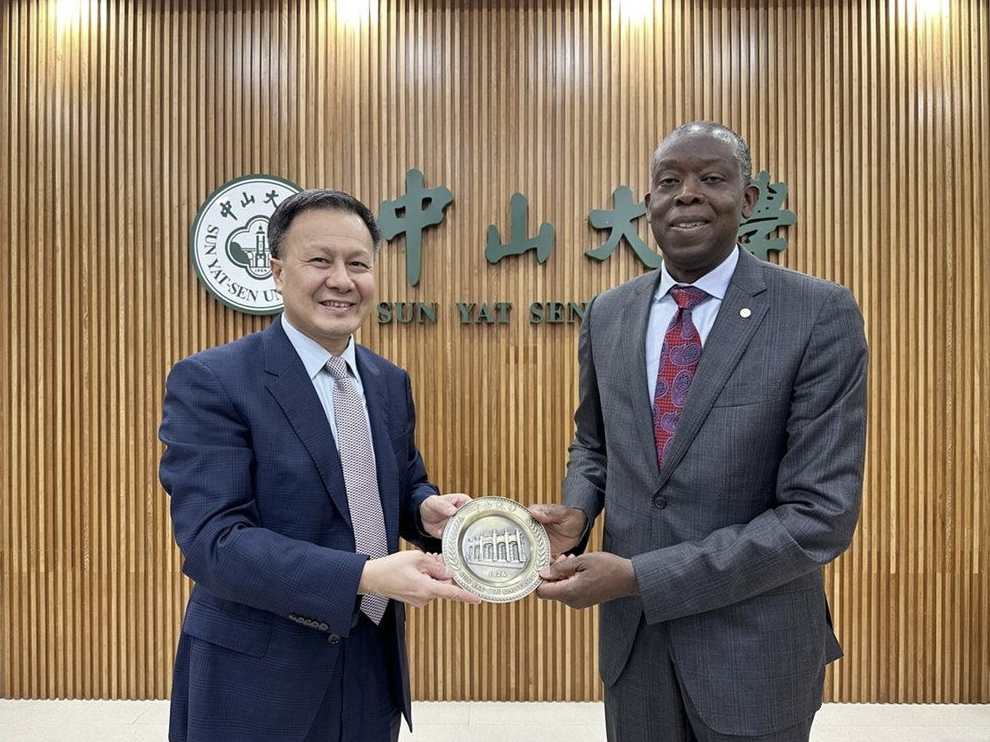How a CCP-Controlled School Tied to Beijing's Nuclear Weapons Program Infiltrated the University of Minnesota
Sun Yat-sen University, which sits on a U.S. unverified list, has funneled millions to the university system’s flagship campus in recent years
Last November, University of Minnesota vice provost Harvey Charles traveled to Guangdong, China, to tour Sun Yat-sen University, the Chinese Communist Party-controlled college known for its top business school. It marked the first time a University of Minnesota delegation had visited the school since COVID, though Charles made clear that any geopolitical tensions stemming from the pandemic did not weaken his relationship with his Chinese counterparts.
“We were received warmly,” he said, “and their desire to continue collaborating with us was as enthusiastic, if not more so, than prior to the pandemic.”

Minnesota seems equally happy with its Sun Yat-sen partnership, which it first established through a joint MBA program in 2001. Sun Yat-sen has sent Minnesota’s flagship Twin Cities campus more than $3.5 million since 2018, according to federal disclosures obtained by the Washington Free Beacon. Minnesota, in turn, encourages its business students to study abroad at Sun Yat-sen’s “leading” management school—and hosts Chinese students from Sun Yat-sen for an international residency program.
The partnership between the two schools, however, didn’t just survive COVID. It also remained in place as the U.S. government targeted Sun Yat-sen for its involvement in the Chinese government’s development of nuclear weapons. That involvement landed the university’s National Supercomputer Center on a U.S. export control blacklist in 2015, according to the Australian Strategic Policy Institute. Five years later, in 2020, the U.S. government added Sun Yat-sen to its “Unverified List,” which consists of foreign entities that refuse to comply with American export inspectors.
Minnesota’s willingness to maintain ties with Sun Yat-sen in the face of U.S. government warnings reflects the CCP’s infiltration of American higher education. Chinese entities routinely funnel millions of dollars to U.S. universities—Stanford accepted more than $27 million from such entities in 2021 and early 2022—in an attempt to peddle influence.
In some cases, partnerships between American and Chinese researchers appear to have contributed to the CCP’s ongoing human rights abuses. China’s largest facial recognition company, for example, donated an undisclosed amount of money to MIT in 2018 to fund research on facial recognition technology, the Free Beacon reported last year. That company, SenseTime, has used such technology to help the Chinese government “track and control” Uyghurs.
Minnesota’s partnership with Sun Yat-sen does not appear to involve the university’s nuclear weapons-tied supercomputer center. Still, one China expert, who spoke on background to discuss the arrangement candidly, called it “very concerning.”
“The university itself is tied to nuclear weapons,” the expert said of Sun Yat-sen. “More broadly speaking, China’s national strategy is to absorb, copy, and steal the technology of the United States.”
“There should be more layers of scrutiny when dealing with entities on U.S. blacklists. That doesn’t seem to be the case here.”
The University of Minnesota, which did not respond to a request for comment, has long embraced Chinese universities and students.
Since 1979, it has operated a “China Center” aimed at building a “bridge of understanding, friendship, exchange, and cooperation between the U.S. and greater China.” In January 2020, the center received the blessing of Minnesota Gov. Tim Walz (D.), who attended its Chinese New Year celebration to discuss his own affinity for the country. Walz for years led student exchange programs that brought U.S. high schoolers to China, at one point praising the nation’s communist system as one in which “everyone shares” and gets free “food and housing,” the Free Beacon reported.
“Governor Walz expressed his gratitude toward Chinese international students studying in Minnesota, and discussed his own experience teaching in China,” according to a Minnesota China Center annual report touting the 2020 celebration.
“Governor Walz emphasized the importance of U.S.-China cooperation to address challenges such as the coronavirus and climate change, saying, ‘The world demands solutions, and the two countries best positioned to be able to do that are the People’s Republic of China and the United States.'”

Sun Yat-sen, meanwhile, isn’t just tied to the Chinese military’s nuclear program. It’s also affiliated with the State Administration of Science, Technology and Industry for National Defense, a Chinese government agency that was established to “strengthen military forces.” That agency supervises Sun Yat-sen alongside China’s Ministry of Education.
Even as it touts its partnership with Sun Yat-sen, the University of Minnesota is not shy in disclosing that the Chinese college has CCP ties—and issues with the U.S. government. Minnesota’s Research and Innovation Office, for example, maintains a list of restricted Chinese parties that twice names Sun Yat-sen. And Minnesota’s management school notes that Sun Yat-sen is “under the direct supervision of the Ministry of Education of the People’s Republic of China” and “strongly supported by both the Ministry and Guangdong province.”
The university has found itself in hot water over controversial ties with Chinese entities before. In 2019, it said it would cut ties with Huawei, the Chinese state-controlled tech giant that became the poster child for Beijing’s spy operations in America.

